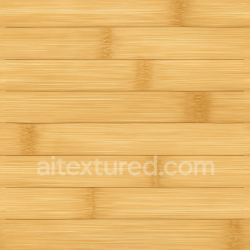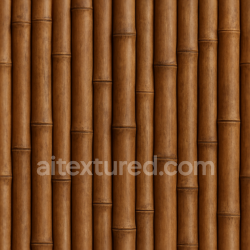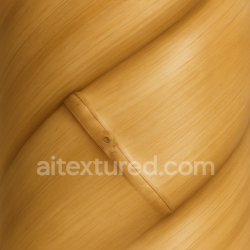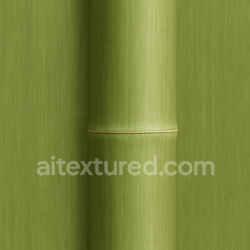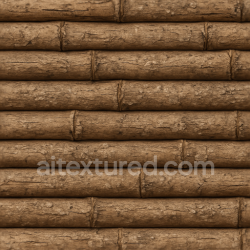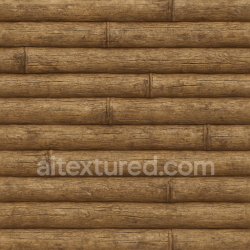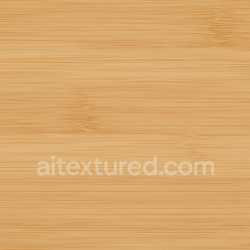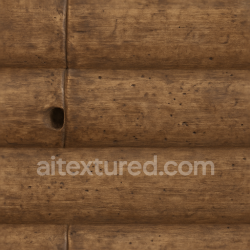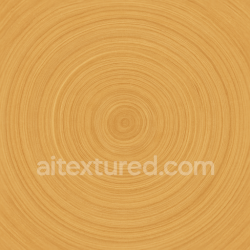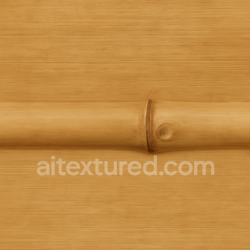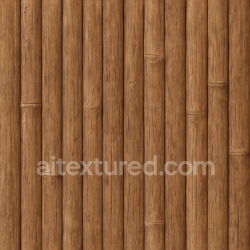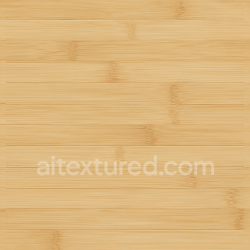Mastering Seamless PBR Fire Textures for Realistic 3D Fire Effects
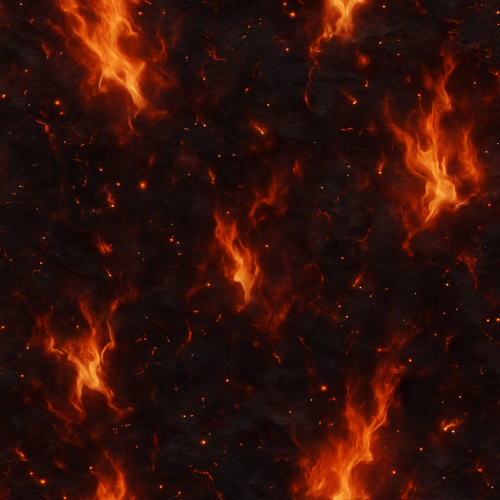
Acquiring authentic fire texture data for physically based rendering (PBR) workflows demands a meticulous approach that balances the ephemeral nature of fire with the rigors of accurate material capture. Unlike static surfaces, fire and its associated elements—flames, embers, charred residues—present unique challenges due to their transient qualities, complex light interactions, and spatial variability. The process begins with careful planning around real-world fire phenomena, leveraging photogrammetry and high-resolution scanning techniques to extract detailed, physically plausible texture maps that can be integrated seamlessly into engines like Unreal Engine and software such as Blender.
Photogrammetry remains the cornerstone for capturing fire-adjacent surfaces—particularly burnt wood, ash deposits, and embers—where the physical substrate retains structural detail crucial for PBR inputs. To maximize fidelity, it is essential to employ high-resolution image capture with consistent, diffuse lighting conditions to avoid specular highlights that can corrupt albedo data. Using polarizing filters can further suppress unwanted glare, enhancing color accuracy. Multiple overlapping images (typically 60-80% overlap) are required to reconstruct fine geometry and texture detail, ideally from a fixed focal length lens to minimize distortion. Close-range photogrammetry rigs or handheld devices equipped with macro capabilities can capture micro-variations in the burnt surface texture, which translate into critical normal and height map detail.
Capturing albedo or base color data for burnt materials demands careful calibration of white balance and exposure. Since charred surfaces often have subtle tonal shifts—ranging from deep blacks to dark browns and occasional reds from residual embers—high dynamic range (HDR) imaging or exposure bracketing can prove invaluable. This approach ensures shadow and highlight details are preserved without clipping, which is pivotal when baking out texture maps for physically accurate energy conservation in PBR shaders. These albedo textures must be devoid of baked-in shadows or lighting artifacts to maintain consistency under variable in-engine lighting.
Ambient occlusion (AO) maps can be derived both from photogrammetry-generated mesh data and through software-based ambient occlusion baking. High-detail mesh reconstructions of burnt materials with intricate crevices and fissures allow for precise AO calculation, which enhances the perceived depth and realism of the textures. It is important to note that AO maps in fire-related materials often reveal subtle soot accumulations in recessed areas, which can be emphasized during the post-processing phase to reinforce micro-variation and local contrast in the final shader.
Normal and height maps extracted from photogrammetry meshes are critical for simulating the rugged, uneven surfaces characteristic of burnt wood and embers. These maps capture micro-displacement and surface irregularities that affect light scattering and specular response, key to convincing PBR materials. When generating normal maps, one must ensure that the mesh reconstruction is sufficiently dense to resolve fine cracks and grain patterns, which are common in charred surfaces. Height maps can be baked from the same data, providing displacement inputs for tessellation or parallax occlusion mapping in game engines, thereby enhancing surface depth without excessive polygon counts.
Metallic maps are generally not applicable for natural fire-related textures because burnt organic materials typically exhibit non-metallic properties. However, emissive maps become invaluable when dealing with active embers or glowing residues. Capturing emissive properties requires high-sensitivity cameras capable of recording low-intensity light emissions, ideally under controlled conditions where ambient light is minimized. These emissive captures can be converted into grayscale or color emissive maps to simulate self-illumination within the PBR shader, lending realism to embers or smoldering coals when lit dynamically in-engine.
Photogrammetry alone cannot capture the dynamic, volumetric nature of flames, which lack a fixed surface and present complex translucency and emission characteristics. Instead, high-speed, high-resolution photography paired with specialized scanning methods, such as structured light scanning with infrared filters, can capture flame silhouettes and flicker patterns for use as animated texture sequences or sprites. Although these cannot be converted directly into static PBR maps, they provide reference data for authoring hand-painted or procedural textures that simulate fire’s fluid motion and emissive qualities in real-time engines.
To optimize captured texture data for real-time workflows, careful tiling and texture atlas strategies are necessary. Fire-adjacent textures often feature non-repetitive patterns due to their organic nature, so generating seamless tiling requires manual retouching or algorithmic blending to avoid noticeable repetition in large surfaces. Incorporating micro-variation techniques—such as overlaying subtle noise maps or vertex color modulation—further breaks uniformity, enhancing the natural feel without sacrificing performance. When exporting textures for Unreal Engine or Blender, maintaining consistent texel density and proper UV layout ensures that roughness and normal details scale appropriately across different assets and scenes.
Calibration and color management are paramount throughout the acquisition and authoring pipeline. Using calibrated monitors and color profiles ensures that albedo textures retain physical plausibility, preventing over-saturation or desaturation that could compromise the energy conservation principles inherent to PBR. Additionally, roughness values extracted or authoritatively painted must reflect the physical condition of the surfaces: burnt wood typically exhibits higher roughness due to its porous, uneven char layer, while embers may display varying roughness coupled with emissive intensity.
When integrating these textures into engines like Unreal Engine, it is advisable to leverage the engine’s material layering capabilities to combine base albedo, roughness, normal, and emissive inputs dynamically. Unreal’s subsurface scattering and translucency settings can simulate residual heat glow or smoldering effects when paired with emissive maps. Blender users can similarly utilize the principled BSDF shader to assemble the texture sets, adjusting roughness and normal inputs to replicate the complex interplay of light on charred surfaces. Baking displacement maps into micro-displacement shaders in Blender can further enhance realism, especially for close-up renders or cinematic sequences.
In summary, acquiring authentic fire texture data for PBR materials requires a hybrid approach that recognizes the limitations of photogrammetry for dynamic elements while exploiting its strengths in capturing burnt substrates and embers. High-resolution image capture, rigorous calibration, and meticulous post-processing allow for the creation of albedo, roughness, normal, AO, height, and emissive maps that respect the physical characteristics of fire-affected materials. Proper tiling, micro-variation, and engine-specific optimizations ensure these textures translate effectively into real-time and offline rendering pipelines, providing artists and technical directors with a solid foundation for generating visually compelling, physically accurate fire-related assets.
Creating realistic fire PBR textures demands a careful balance between procedural generation and photographic authoring, combining the strengths of both approaches to capture the dynamic complexity of flames, glowing embers, and the aftermath of combustion on materials. Maintaining physical accuracy while retaining artistic control requires a nuanced workflow that leverages advanced software tools, meticulous calibration, and optimization for real-time engines such as Unreal Engine and Blender’s Eevee or Cycles renderers.
Procedural texture creation excels in simulating the fluid, evolving nature of fire, where static photographic captures can fall short. Using procedural noise, fractal patterns, and animated displacement maps, artists can generate base color (albedo) maps that convey the inherent color gradients of flames—from the hot blue core to the orange and red periphery—without relying solely on image references. Software such as Substance Designer or Blender’s procedural shader nodes allows the authoring of such highly customizable textures. These tools enable the generation of dynamic flame patterns by layering multiple noise functions (e.g., Perlin, Worley, or Simplex) with varying frequencies and amplitudes, modulated over time to mimic flickering and turbulent behavior.
For instance, in Substance Designer, one can blend directional noise with radial gradients to simulate upward-moving flames. This albedo is often paired with emissive maps that define self-illumination intensity, crucial for fire materials. While emissive is not a standard PBR texture, its integration is essential for fire realism. In the PBR workflow, roughness maps derived procedurally can represent the shifting glossiness of burning surfaces—embers tend to have a low roughness (high specular reflectance), while cooler ash and charred materials exhibit higher roughness values. Normal maps, generated via procedural height maps or converted from displacement textures, introduce micro-variation that breaks up surface uniformity and enhances light interaction, reinforcing the volumetric feel of embers and scorched textures.
Photographic texture acquisition complements procedural methods by providing authentic detail and nuanced color information, especially for the aftermath of fire, such as scorched wood, cracked charcoal, and soot deposits. High-resolution photographs, captured under controlled lighting conditions to minimize shadows and reflections, form the basis for accurate albedo maps. These images require careful calibration to ensure color fidelity; neutral gray references and exposure bracketing are standard practice. Subsequent processing involves removing baked lighting via techniques like neutralization or using software such as xNormal or Knald for generating normal and ambient occlusion maps from high-poly sculpts or photogrammetry scans.
Integrating photographic data into a PBR workflow involves creating roughness and metallic maps from grayscale data extracted via channel manipulation or smart masks. For fire-affected materials, metallic values generally remain low or zero, as these surfaces are predominantly non-metallic; however, subtle variations can be introduced to simulate residual metallic sheen in certain charred metals or alloys. Ambient occlusion maps, derived from either baked geometry or approximated from curvature and cavity maps, add depth to crevices and cracked surfaces, crucial for believable scorched textures. Height maps enhance parallax or tessellation effects in engines, imparting a tactile quality to embers and burnt surfaces.
Tiling and micro-variation are critical considerations in both procedural and photographic workflows. Procedural textures inherently support seamless tiling due to their algorithmic nature, but care must be taken to avoid obvious repetition. Introducing stochastic variation through noise overlays or blending multiple procedural layers mitigates tiling artifacts. When working with photographic textures, especially for large surfaces, hand-painting or using texture projection techniques can reduce visible seams. One effective technique involves using trimmed, high-frequency detail maps overlaid on low-frequency base textures to break uniformity. In Unreal Engine, material functions can blend multiple texture sets based on world-space coordinates or procedural masks, enabling micro-variation without significant performance costs.
Calibration between procedural and photographic inputs is essential to maintain physical plausibility. For example, the albedo brightness and saturation from photographic captures must be adjusted to align with the output of procedural maps to prevent unnatural contrast or color shifts when layered or blended. Using color grading nodes within the material editor of Unreal or Blender can harmonize these inputs. Similarly, roughness values derived from photographs often need remapping to fit the energy-conserving range expected in PBR workflows. Artists should employ reference materials and validation tools, such as the Allegorithmic PBR Reference or the UE4 Material Viewer, to verify that the combined maps respond accurately under various lighting conditions.
Optimization is another key factor, particularly for real-time applications. Procedural textures can be computationally expensive if evaluated entirely at runtime, so baking procedural patterns into texture maps or using runtime procedural shaders with limited complexity is a common trade-off. In Unreal Engine, using virtual texturing or texture streaming can mitigate memory usage when working with high-resolution baked textures of embers or scorched surfaces. For dynamic flames, animated flipbooks or shader-based noise-driven emissive maps offer performance-friendly alternatives to fully procedural volumetric fire simulations.
In Blender, procedural textures afford greater flexibility for offline rendering workflows. The node-based shader editor allows fine control over texture blending, displacement, and emission without the constraints of real-time performance, enabling artists to iterate rapidly and generate high-fidelity textures that can later be baked for engine use. Baking displacement or normal maps from procedural shaders ensures that complex surface details are preserved in texture maps compatible with PBR pipelines.
Finally, practical tips for maintaining artistic control while ensuring physical accuracy include iterative testing under standardized lighting setups, such as HDRI maps representing daylight and night scenes. Artists should also consider the temporal behavior of fire-related textures, using animated procedural noise or layered flipbooks to simulate flickering and ember glow changes over time. This temporal dimension often requires a hybrid approach: procedural generation for dynamic components (flame movement, ember flicker) and photographic textures for static charred surfaces, blended seamlessly within the material graph.
In conclusion, a robust fire PBR texturing workflow leverages procedural generation for dynamic, seamless flame patterns and emissive behavior, while photographic textures provide authentic detail and color fidelity for scorched and embered surfaces. The synthesis of these methods, coupled with precise calibration, micro-variation strategies, and engine-specific optimization, results in fire textures that are both physically accurate and artistically compelling.
Creating physically based rendering (PBR) textures for fire materials demands a nuanced understanding of how each map type contributes to the depiction of fire’s inherently dynamic and emissive nature. While traditional PBR workflows are often optimized for opaque, solid surfaces, fire textures require a tailored approach to accommodate translucency, radiance, and heat-induced distortion. This section explores the generation and calibration of essential PBR maps—albedo (base color), roughness, metallic, normal, and emissive—alongside ancillary maps like ambient occlusion (AO) and height, emphasizing their roles in achieving photorealistic fire effects within modern rendering engines such as Unreal Engine and Blender’s Eevee or Cycles.
The albedo map for fire textures differs fundamentally from that of typical materials. Instead of representing diffuse reflection from a solid surface, the albedo here encodes the core color information of the flame’s body. This texture must capture the gradient transitions from deep, incandescent oranges and reds near the fuel source to the cooler, often bluish tips of the flame. Because fire is a volumetric and translucent phenomenon, the albedo should avoid overly saturated or flat colors; instead, it benefits from subtle hue shifts and soft gradients that simulate the varying temperature zones within the flame. When authoring albedo, it is advisable to work with high dynamic range (HDR) references or real flame photography to accurately sample color variations. These maps are typically generated in 2D using procedural noise layered with hand-painted gradients or extracted from flame footage via frame-by-frame analysis, depending on whether the texture is static or animated. The albedo texture should be calibrated in gamma-corrected sRGB space, ensuring that color fidelity matches the engine’s input expectations.
Roughness maps for fire materials serve a somewhat unconventional purpose. Since fire itself does not have a solid surface, roughness here is effectively a proxy that influences how the renderer interprets micro-surface scattering and light diffusion on the flame’s visible boundary. A common approach is to create a roughness map that is predominantly low, reflecting the smooth, glossy nature of hot gases and plasma that compose the flame’s surface. However, micro-variations are critical to break up uniformity and prevent the fire from appearing unnaturally smooth or plasticky. These variations can be introduced through procedural noise patterns or subtle fractal textures that simulate the fluctuating surface tension and turbulence of the flame front. When generating roughness maps, it is essential to consider engine-specific roughness calibration curves; for example, Unreal Engine’s physically based material model expects roughness values between 0 (perfect mirror) and 1 (fully rough diffuse), so values for fire typically range from 0 to 0.3 with micro-variation, ensuring the flame maintains a glossy yet softly blurred appearance. Optimizing roughness textures to tile seamlessly or blend dynamically with particle system parameters can further enhance realism.
The metallic map generally holds little relevance for fire materials, as flames do not exhibit metallic reflections. In most workflows, this channel is set to zero (non-metallic) across the entire texture to prevent any unintended specular highlights that could conflict with the emissive properties of the fire. However, in specialized cases—such as simulating metallic combustion residues or sparks within the flame—selective use of metallic values might be warranted, but this remains an edge case rather than standard practice.
Normal maps play a critical role in conveying the dynamic surface perturbations and volumetric turbulence of fire. Unlike solid surfaces where normals describe microfacet orientations, for fire, normal maps simulate the undulating, flickering surfaces that affect light interaction. They should be crafted with high-frequency noise and animated distortions to mimic flame motion and heat-induced air currents. Procedural generation methods, leveraging Perlin or Worley noise combined with flow fields, are effective for producing temporally coherent normal maps suitable for use with particle-based or volumetric fire simulations. When authored, these maps must be carefully calibrated to avoid excessive intensity, as overly strong normal perturbations can cause visual artifacts or unnatural shadowing. In Unreal Engine, normal maps are expected to be stored in the tangent space format with a blue channel bias around 1.0; Blender supports both tangent and object space normals, but tangent space is preferable for animated fire textures. Integrating these normal maps with engine-specific subsurface scattering or translucency shaders can enhance perceived volumetric depth.
Although not always mandatory, ambient occlusion (AO) maps can be leveraged to darken crevices or denser regions within composite fire textures, particularly in particle systems where flames interact with physical objects or fuel sources. AO here functions more as a mask to modulate indirect lighting attenuation rather than traditional self-shadowing. It is typically baked from volumetric data or generated procedurally, then inverted and softened to avoid harsh transitions. AO maps are useful when compositing fire layers over charred materials or surfaces with embedded smoldering residue.
Height maps or displacement textures are occasionally employed to add micro-scale volumetric variation or heat distortion effects around the flame’s periphery. These maps can drive vertex displacement or tessellation in engines that support such features, simulating the subtle warping of air caused by heat differentials. Height maps are often derived from noise patterns synchronized with the normal map to maintain coherence, and their intensity must be carefully moderated to prevent geometric artifacts. When using height maps for fire, it is critical to optimize for performance, as tessellation and displacement can be costly and often unnecessary for background or minor fire elements.
The emissive map is arguably the most vital component in fire PBR textures, defining the radiant glow and heat output that make flames visually compelling. Emissive maps must encode intensity and color temperature variations across the flame, with the highest intensity centered near the fuel source and tapering towards the cooler extremities. Since emissive textures can emit light that influences scene illumination, they are frequently authored in linear HDR space to preserve the full dynamic range of brightness. Many engines allow for emissive intensity scaling or bloom post-processing, so the map should be calibrated to avoid oversaturation that could result in clipping or loss of detail. When animating fire, emissive maps can be part of flipbook sequences or procedural shaders that simulate flickering and pulsing luminosity. In Unreal Engine, emissive maps often interact with volumetric fog and particle lighting systems to create believable light halos and heat haze effects. In Blender, combining emissive shaders with volumetric scattering nodes can enhance the flame’s glow and heat distortion realism.
A critical practical consideration across all these maps is tiling and seamlessness. Fire textures are frequently applied to particle systems or volumetric shaders where repetition artifacts can quickly break immersion. Careful design of tileable noise patterns and gradient transitions is essential to maintain continuity during animation and spatial repetition. Additionally, micro-variations introduced via noise ensure that even tiled textures appear organically varied, preventing mechanical uniformity. When implementing these textures in engines, it is advisable to leverage material instances or shader parameter controls to dynamically alter map intensities, colors, or distortion amounts based on environmental factors like wind speed, fuel availability, or scene lighting conditions.
Calibration between maps is another key step. The roughness and emissive maps, for example, must be balanced so that the flame appears appropriately glossy yet radiant rather than matte or flat. Normal maps should complement emissive intensity to simulate flickering highlights without generating unnatural shadowing. This interplay is often fine-tuned within the engine’s material editor, where real-time feedback allows iterative adjustments. Profiling performance impact is also crucial, especially when deploying emissive-heavy materials in large-scale scenes. Optimization strategies include reducing texture resolutions for distant fire sources, using compressed texture formats that retain HDR data, and employing temporal reprojection or LOD systems for animated emissive maps.
In summary, generating PBR maps for fire materials involves a departure from conventional solid surface workflows to accommodate the unique optical and physical properties of flames. Albedo maps encode nuanced temperature-driven color gradients rather than diffuse surface color; roughness maps simulate subtle micro-surface fluctuations; metallic maps remain predominantly unused; normal maps convey volumetric turbulence; AO and height maps provide ancillary detail for ambient shading and heat distortion; and emissive maps define the flame’s intrinsic radiance and flickering glow. Mastery of these maps’ generation, calibration, and integration within rendering engines is essential for achieving fire effects that convincingly interact with scene lighting, atmospheric conditions, and camera perspective, ultimately elevating the realism and immersion of digital fire in real-time and offline rendering contexts.
